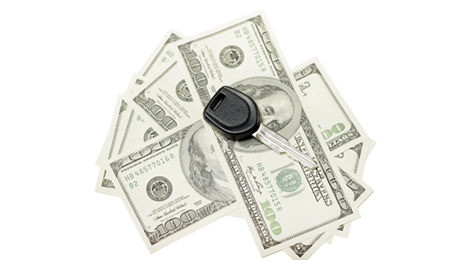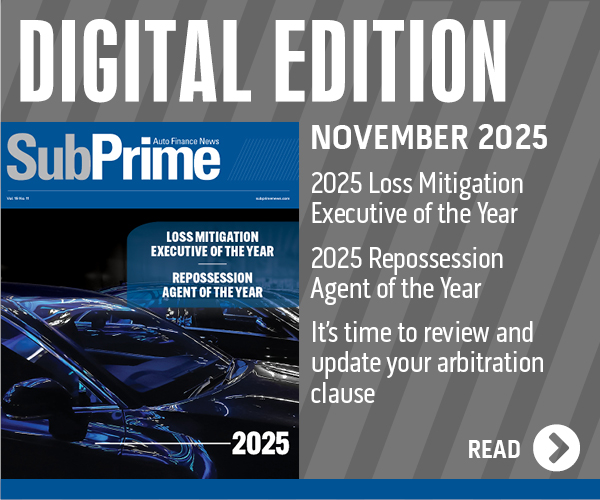2015 subprime vintage suffers losses not seen since 2005

By subscribing, you agree to receive communications from Auto Remarketing and our partners in accordance with our Privacy Policy. We may share your information with select partners and sponsors who may contact you about their products and services. You may unsubscribe at any time.
NEW YORK –
With average vehicle installment contract terms nearly at 70 months and outstanding auto asset backed security issuance at the highest level in 14 years, the latest update from Fitch Ratings also pinpointed where the weakest vintage in subprime financing appears to be.
Fitch’s Hylton Heard and John Bella Jr. explained in a report delivered to SubPrime Auto Finance News that 2015 is the weakest vintage in the subprime space. Heard and Bella arrived at that assertion since contracts in that vintage now are seasoned 19 months, and the 2015 vintage is extrapolating to more than 15 percent in cumulative net losses. That figure is higher than any vintage since 2005, according to Fitch’s report.
“The 2015 vintage has been prone to high loss severity from a weaker wholesale market and little-to-no equity in loan contracts at default due to extended-term lending, a trend that was not as apparent in the recessionary vintages,” Heard and Bella said in the report.
Meanwhile, Fitch noticed the 2016 vintage is showing some improvement. Although only seasoned six months, Fitch reported the 2016 vintage is performing slightly better than the 2015 vintage, but loss extrapolations still show losses reaching a range of 13 percent to 14 percent.
Overall, Fitch found that vintages from 2014 through 2016 are trending in line with ones seen during recessionary times, as the span from 2009 through 2012 produced losses between 8 percent and 11 percent and the 2013 segment came in at 11.5 percent.
As previously mentioned, Fitch pointed out that contract terms averaged above 69 months during the first half of the year.
Subscribe to Auto Remarketing to stay informed and stay ahead.
By subscribing, you agree to receive communications from Auto Remarketing and our partners in accordance with our Privacy Policy. We may share your information with select partners and sponsors who may contact you about their products and services. You may unsubscribe at any time.
“Lenders have offered higher terms in response to lower new vehicle sales and rising vehicle transaction prices, supporting consumers in purchasing a vehicle,” Heard and Bella said in the report.
With consumers taking on more debt load to obtain a vehicle, the auto ABS issuance is soaring, too. Fitch determined outstanding prime and subprime auto loan ABS hit $102.2 billion through the first half of this year; the highest level recorded in more than 14 years.
More details about subprime market
Fitch’s Heard and Bella acknowledged “both delinquencies and losses have come down from peaks levels experienced in prior months as consumers benefited from tax season during 2Q17.” But 60-day delinquencies closed the quarter at 4.55 percent, which marked a rise of 12 percent year-over-year.
The report also mentioned annualized net losses in the subprime segment jumped 17.4 percent year-over-year in the second quarter to come in at 7.42 percent.
“In addition to higher loss frequency, recovery rates have continued to decline due to wholesale market weakness, further contributing to elevated loss levels,” Heard and Bella said in the report.
Fitch’s report mentioned the ABS platforms from Santander Consumer USA and GM Financial continued to exhibit “stable performance despite slightly higher delinquencies and losses.
“Loss levels for transactions from both platforms remained well within Fitch’s initial base case loss expectations,” Heard and Bella said.
“Non-established ABS platforms continued to drive much of the weaker performance observed in the subprime ABS sector. Many of these platforms have limited experience and have issued ABS secured by loans with high LTVs and high term to deeper subprime borrowers,” continued Heard and Bella, who mentioned that these non-established platforms now account for 50 percent of Fitch’s subprime index, “well above historical levels.”
Meanwhile, the volume of paper potentially going into the subprime ABS market is diminishing.
“Fitch observed a notable pullback in origination volume from certain subprime lenders, particularly larger ones, in 2016, a trend that has continued in (the first half of 2017). Fitch views these pullbacks as a positive, and performance may improve should lenders employ stricter underwriting criteria,” Heard and Bella said in the report.
Update on prime market
According to Fitch’s report, prime auto ABS performance has stabilized so far this year, “in line with seasonal trends; however, 12-month averages continued to climb.”
The report noted that 60-day delinquencies in the prime segment decline to 0.37 percent from 0.42 percent a year earlier. Despite the improvement, Fitch found that the trailing 12-month average has reached 0.42 percent, the highest level in five years.
While prime annualized net losses decreased to 0.54 percent at the year’s midpoint, Fitch calculated that the figure represented a 15-percent jump compared to the same point a year ago.
“Prime loan ABS credit quality continues to be stable to improving as a result of tighter underwriting from a FICO perspective. This is in direct response to elevated loss levels, particularly for lower FICO borrowers, and is a positive for asset performance,” Heard and Bella said in the report.
“Average contract balances continues to increase driven by increasing sales of utility vehicles and higher MSRPs overall,” they continued. “The term continues to be extended in an effort to keep payments manageable for borrowers, but asset performance for extended term loans is generally weaker and has been a driver of weaker recovery rates observed recently.
"This dynamic will continue to affect loss severity, particularly for early-stage defaults,” Heard and Bella went on to say.


